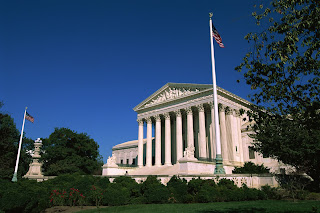From the
Law Marketing Portal we learn that an interesting trend in legal marketing has sprung up recently. From conversations on the Legal Marketing Association (
LMA)
listservs to articles referenced on Twitter, commentary on blogs and invites for presentations and
webinars, legal marketers are talking about spending less money on traditional brand awareness marketing and investing more time and money into business development and attorney coaching.
In May 2009, The Wall Street Journal cited research by
BTI Consulting Group that said, “business development is one of the few marketing areas where law firm executives are most willing to increase spending. Nearly 70 percent said they planned to provide more marketing coaching to lawyers.”
Of course, it’s not at all surprising that law firms would ramp up their business development efforts. After more than a decade of consistent growth, profits plunged in 2008 and layoffs and pay cuts followed close behind. Once the work stopped falling into their laps, a realization set in: attorneys don’t know how to market. They need to be taught business development skills – and fast – in order to hold on to existing clients and meet prospects. But something more is going on beyond the commitment to generating new business. What we’re seeing is not simply a change of focus from traditional brand awareness marketing to business development, but a rise in an entirely new kind of branding for law firms.
In the past, law firms and the companies they represent marketed their brand through print, radio and television advertising, direct mail and email campaigns. Now,
Tivo,
iPods,
RSS feeds, spam filters and recycling bins are making it even easier for people to ignore these intrusions. Web 2.0 and social networking have ushered in a new kind of branding, one that is participatory, conversational and reciprocal.
Brand ambassadors
Far from cutting back, there is a renewed commitment to branding 2.0 at law firms. Instead of using print advertising or other throwaway media forms, attorneys are being trained as brand ambassadors to share stories about the value that their firms deliver and ultimately raise brand awareness. Firms are telling attorneys to meet with their clients more regularly and become more involved in professional and industry organizations. Some attorneys have begun to connect with clients and prospects on
LinkedIn, Twitter and
Facebook, among other sites.
As branding becomes personal in the legal industry, some firms are taking their first steps towards this new approach.
Cummins & White,
LLP, a 16-attorney firm with two offices in California, has devoted itself to client outreach activities. It has increased spending allowances for meetings with clients and referral sources and opened those up to any attorney who is interested in business development.
Bingham McHale, a 140-attorney firm based in Indianapolis, doubled its coaching budget. Green &
Seifter Attorneys,
PLLC, a 30-lawyer firm in Syracuse, New York, has shifted dollars away from print advertising and reallocated those funds to a business development consultant who works with a handful of attorneys one-on-one and with another ten in monthly group meetings. Not only is the program a success, having already paid for itself in new business, but it’s paying dividends. Kathleen Ryan, director of marketing and public relations at the firm, has seen “an increase in confidence and in traditional business development techniques like articles, referral development, [and] speaking engagements.” Sites like
LinkedIn and
Facebook are the online extension of in-person socializing, but Ms. Ryan is struggling to get her attorneys to participate in these social networks.
Other marketing professionals find that they’re having an easier time convincing attorneys to take conversations online. Stern
Elkind Curray &
Alterman, a boutique, immigration law firm in Denver, is cutting back significantly on traditional outreach like direct mail and print advertising to focus on getting attorneys in front of clients and prospects. Mary
Dilworth, the firm’s marketing manager, works with each attorney on their individual marketing plan. She encourages attorneys to join local chambers of commerce, associations and other professional groups. To support these efforts, the firm is investing in business development consultants to coach attorneys. She supports attorneys who continue the conversation through blogging,
webinars and social networking.
Social networks are the impetus
Ms.
Dilworth identifies social networks as an impetus for law firm branding 2.0: “the drive is that we want more face-to-face time with prospects and clients…the whole new social media is helping to drive that. It's more hands-on and direct, and sometimes can be easier to measure.” Because these online efforts
aren’t constrained by time, place, or even number of people, they offer attorneys a more efficient way to share their expertise, build relationships and become an active member of their community.
During the boom years, high performing attorneys had their own books of business that would go with them if they decided to jump to another firm. In contrast, these new attorney brand ambassadors are building relationships with clients, identifying needs outside of their area of expertise and cross-selling the services of other practice areas within the firm. We’ll have to wait and see if clients become clients of the firm and not the guarded gems of individual attorneys. Building that kind of solid client base ultimately may depend upon whether or not firms remain committed to the relationship building inherent in branding 2.0. But cultivating an environment focused on discovering new ways for brand ambassadors to better serve their clients is a great place for law firms to start.
Click here for the original article.
Please be sure to visit
www.hardinglaw.com, the website for the law firm of Harding & Associates, for more information on California family law.


